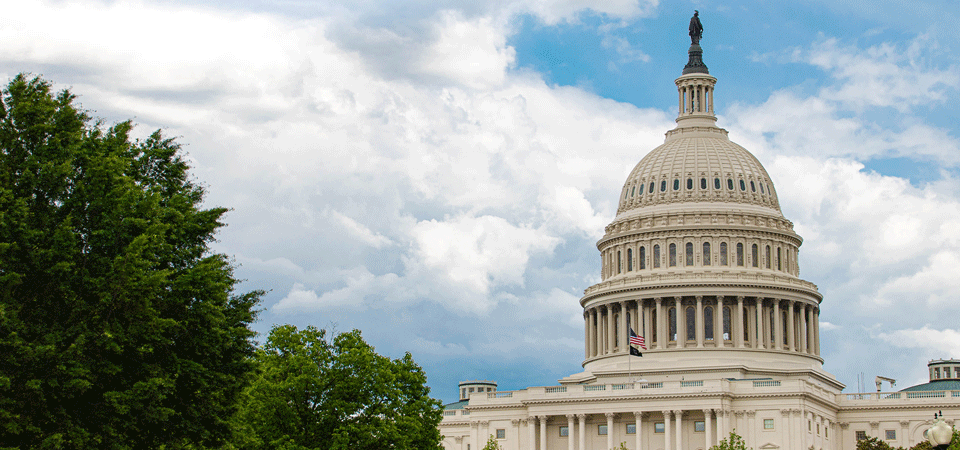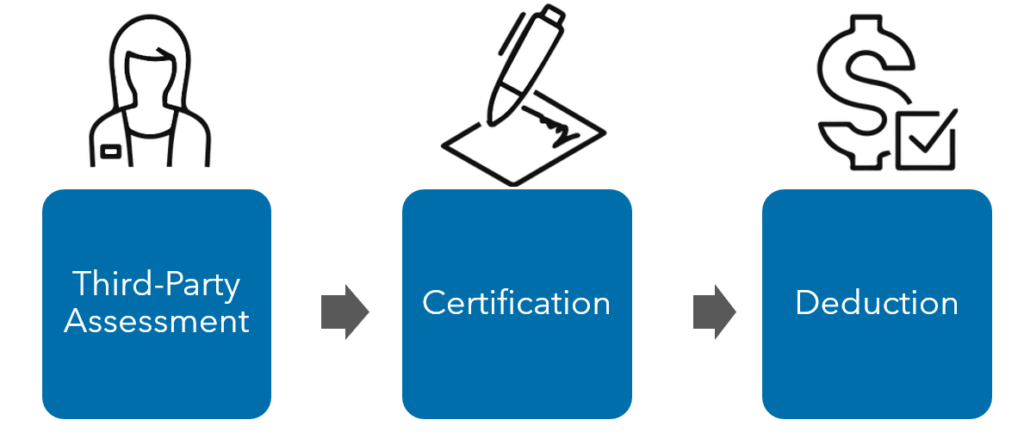Inflation Reduction Act Upgrades the Section 179D Tax Deduction

President Joe Biden signed the Inflation Reduction Act of 2022 into effect on August 16 after the legislation was approved by Congress. One of its major highlights is an expansion of the Internal Revenue Code Section 179D.
Section 179D pertains to a deduction for commercial building energy-efficient building property, and the new legislation brings with it a $369 billion investment to incentivize green building projects.
Additions to Section 179D have the potential to have positive financial impacts for both building owners and qualifying construction, engineering and architecture companies.
Upgrades to IRC Section 179D
The 2021 iteration of Section 179D, permanently extended in The Consolidated Appropriations Act of 2021 permanently extended Section 179D and provided for a tax deduction of up to $1.80 per square foot for an installation involving an HVAC system, indoor lighting or building envelope that successfully reduced a commercial building’s total energy cost by at least 50%.
For buildings placed in service after 2022, the enhanced Section 179D deduction is now on a sliding scale that increases every percentage point exceeding a 25% reduction in energy use. The base deduction is $1 per square foot and goes up to $5 per square foot for those who are eligible for the enhanced Section 179D deduction.
The updated Section 179D establishes qualification for tax deductions when a building’s energy cost is reduced by at least 25% rather than 50%. Additionally, the greater the energy cost savings of an installation, the greater the financial incentive.
Previously, the Section 179D tax deduction could only be claimed once over a building’s lifetime, but the new legislation allows for an additional Section 179D deduction to be claimed every three years by commercial building owners if subsequent energy improvements are made.

Likewise, it can be claimed every four years on buildings owned by tax-exempt agencies. This is a major long-term benefit of the upgraded Section 179D, which now offers a longstanding financial incentive for energy-efficient retrofits.
In addition, the credit applies not only to a fully qualified building, but you’re able to partially qualify for certain property components, including lighting, building envelope, HVAC and hot water systems. These systems must meet certain target savings requirements or an interim lighting rule.
Who Qualifies for the Section 179D Tax Deduction?
Formerly, Section 179D applied to commercial building owners, as well as building designers such as contractors, engineers or architects of local, state and federal buildings. For government buildings, the entity responsible for designing the energy-efficient installations qualified for the tax deduction.
These same rules apply for the updated Section 179D, but now parties responsible for designing commercial buildings owned by tax-exempt organizations, including nonprofits, tribal agencies, churches, nonprofit hospitals and nonprofit universities and schools, also qualify.
A building is deemed a “qualified building” if it is located in the U.S. and was “originally placed in service no less than five years before the establishment of the qualified retrofit plan for the building.”
Real estate investment trusts (REITs), which are owners and operators of income-producing real estate, are also now eligible to claim tax deductions under Section 179D for energy-efficient renovations to their buildings. They had been previously excluded from eligibility.

The new legislation offers a higher 179D deduction when meeting higher than prevailing local wage and apprenticeship requirements for workers and mechanics employed during energy-efficient installations. The wages paid should not be less than the prevailing wage rates for the local area, as determined by the Secretary of Labor.
What Changes Have Been Made to ASHRAE Requirements?
The Inflation Reduction Act specifies that projects are required to meet the standards of the American Society of Heating, Refrigerating and Air-Conditioning Engineers (ASHRAE) beginning four years prior to the building’s placed-in-service date.
If they do not meet these standards, they are ineligible for the tax deduction. Previously, projects needed to meet ASHRAE standards beginning two years prior to the building’s placed-in-service date.
What are the Steps To Claiming the Section 179D Tax Deduction?
The process to claim the 179D deduction is fairly straightforward, but it’s important to follow the IRS’s requirements for making a claim.
Below are the three major steps needed to benefit from the 179D deduction:

1. Assessment by a Third Party
Assessments are based on the new ASHRAE standards outlined in the Inflation Reduction Act and Internal Revenue Code (IRC).
To successfully claim the Section 179D deduction, a qualified third party must first test the energy expenditure of a building after renovations are finished. The qualified third party uses IRS-approved software and procedures to measure energy performance.
Third parties eligible to make energy expenditure assessments are professional engineers (PEs) who have licensure in the same state as the building.
2. Documentation/Certification of Assessment
Once an assessment is complete, the third party signs a document of certification asserting that they have examined the building and that it meets the requirements for the 179D deduction.
The document of certification should also detail the total amount of energy impact of the renovation. This is a very important component that helps determine the amount of the deduction that can be claimed.
3. Allocation of Deduction
In the case of tax-exempt buildings, the building owner and the designer (contractor, engineer or architect) claiming the deduction are required to sign a statement specifying who the deduction is allocated to for tax purposes.
Learn More About How to Claim the Section 179D Deduction
The passage of the Inflation Reduction Act and updated Section 179D promises to give building owners and contractors increased return-on-investment (ROI) for green buildings and related retrofits for years to come. The significant financial incentive that the Section 179D tax deduction offers has the potential to spur many energy-efficient buildings and improvements that may have seemed too costly in the past.
If you are curious about how this new legislation may impact your business, get in touch with a Warren Averett advisor or request for one of our team members to reach out to you.

